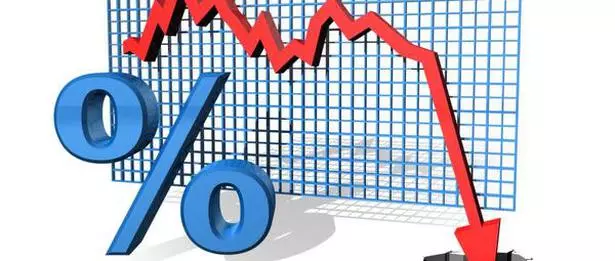 Interest cover of 318 firms in Nifty 500 basket shrinks to 3.99 times in 2018-19
Interest cover of 318 firms in Nifty 500 basket shrinks to 3.99 times in 2018-19
There has been a deterioration in the ability of India’s top listed companies to repay loans.
A BusinessLine analysis of the Nifty 500 companies shows that the aggregate interest coverage ratio of these companies fell to 3.99 times their earnings before interest and tax (EBIT) in 2018-19 compared to 4.64 times EBIT in 2017-18.
The aggregate interest cover has receded to the levels last seen at the end of 2014-15, showing that broader economic growth slowdown is crimping the ability of companies to pay the cost of finance. This analysis is based on the numbers of 318 companies in the Nifty 500 basket whose financial year ends in March. Financial service companies were excluded from the study.
Reliance Communications and Tata Motors have the worst interest cover. RCom is currently under bankruptcy proceedings and was struck by Reliance Jio’s whirlwind entry into the telecom space.
Tata Motors, however, had a healthy interest coverage ratio of 5.5 times its EBIT in 2014-15. Now, it continues to make losses at the consolidated level due to the slowdown in its key commercial vehicles segment, and at its subsidiary Jaguar Land Rover. Bajaj Auto, Caplin Point Lab and National Aluminium Company are some companies with extremely healthy interest cover, mainly due to low debt, resulting in meagre interest outflow.
Sectoral analysis
In terms of sectors, the fast moving consumer goods space seems to be the most well off with the consumer goods companies in the Nifty 500 having an aggregate interest coverage ratio of nearly 15 times the aggregate EBIT. This has almost doubled from around 8.8 times five years ago. Strong interest cover of companies such as ITC, Britannia, and HUL have helped the sector’s aggregate number.
The auto sector, though, is showing signs of a slowing growth in profits, as a result of falling sales for over a year. The aggregate interest coverage of original equipment manufacturers and auto ancillary companies has seen a stark fall from 2017-18. At the end of 2018-19, their interest coverage fell to 2.23 times compared to 5.87 times the aggregate EBIT.
Pharmaceutical companies have also seen a significant erosion of their ability to pay their interest costs from profits. To put this in perspective, five years ago the pharma companies that are now part of the Nifty 500 had an aggregate interest cover of 12.8 times. This has now shrunk to 4.8 times in 2018-19.
Cement companies have seen a slight deterioration in their ability to pay their interest costs. Their aggregate interest cover fell marginally to 1.78 times the EBIT in 2018-19 from 2.07 times in 2017-18.
Metal and mining companies are well placed compared to the rest of the Nifty 500 constituents. Their aggregate interest cover has continued to improve over the past few years. In 2018-19, the aggregate interest cover improved marginally to 3.9 times compared to 3.5 times in 2017-18.
One of the sectors that has recorded a robust improvement in interest cover is industrial manufacturing. This segctor’s aggregate interest costs fell 4 per cent in 2018-19 to ₹ 3,279 crore compared to 2017-18. This has led to the aggregate interest cover rising to 7.42 times in 2018-19 compared to 4.8 times EBIT in 2017-18. But this improvement could be due to firms postponing capex plans and keeping debt low due to the slowdown.
The energy sector, which includes power and oil and gas, has also seen a deterioration of interest cover on an aggregate basis. Aggregate interest cover of energy companies shrank to 4 times EBIT in 2018-19 compared to 5 times in 2017-18. This is mainly because of the deterioration of interest cover of oil marketing companies like IOC, HPCL, MRPL and BPCL.
Power producers like NTPC and SJVN and power transmission companies like Power Grid and Adani Transmission also saw a worsening of their interest coverage ratio in 2018-19.
[“source=thehindubusinessline”]



